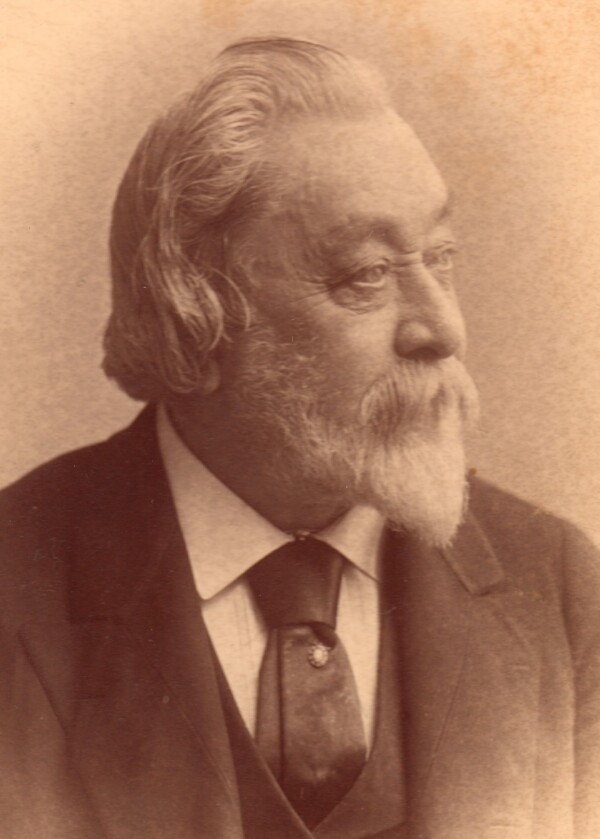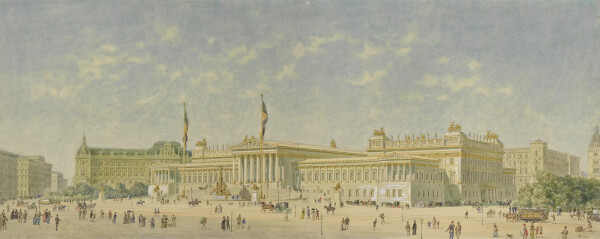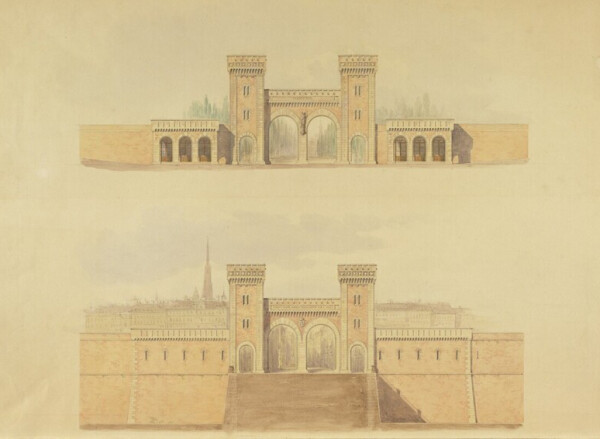Theophil Hansen

Theophil Hansen
© Klimt Foundation, Vienna

Parliament designed by Theophil Hansen, watercolor from 1887, Wien Museum
© Wien Museum

Theophil Hansen: Competition design for the new construction of the Stubentor, The Albertina Museum Vienna
© The ALBERTINA Museum, Vienna
Theophil Hansen was a Danish-Austrian architect and one of the most important builders of the Ringstraße period. His buildings in Vienna include the Academy of Fine Arts, the Musikverein, the Stock Exchange and the Parliament.
Theophil Hansen, born in Denmark in 1813, studied architecture at the Copenhagen Academy of Arts. After his graduation, he traveled through Europe and then went to Athens, where his brother was working as an architect. He stayed in Greece for several years, where he had professional success as an architect and drawing teacher.
An Architect’s Career in Vienna
Hansen came to Vienna in 1846 to collaborate with the architect Ludwig Förster, who would later become his father-in-law. One of his first major projects in Vienna was the construction of the Armory Museum (now Museum of Military History, Vienna) at the Arsenal – a military complex in the 3rd District of Vienna. Hansen worked as an independent architect from 1852 and received many commissions for public and private buildings in Austria and abroad.
Hansen built several palaces and residential buildings in the Ringstraße area during the 1860s and 1870s, including Epstein Palace or the no longer existent Heinrichhof opposite the Vienna State Opera. The architect also realized monumental public buildings such as the Musikverein, which was built with financial support from Nicolaus Dumba. Hansen also built the Academy of Fine Arts, the Stock Exchange and his most important work, the Parliament building in a style based on classical Greek architecture. His drafts for the Court Museums, however, which he presented in a much disputed competition, were rejected.
Professorship and Retirement
Hansen became an Austrian citizen with the right of domicile in Vienna in 1866. He was appointed a professor at the Vienna Academy of Fine Arts two years later, where he first headed the Specialist School of Architecture and later taught perspective for painters. He retired from teaching on his 70th birthday. According to a report in Die Presse, it was on this occasion that his students founded the Hansen-Verein (later Hansen-Club) “in memory of their master’s work.” Even though he had dissolved his architectural firm, he continued to participate in competitions sporadically. The highly esteemed and influential architect died in Vienna in 1891.
Literature and sources
- Architektenlexikon. Wien 1770–1945. Theophil Hansen. www.architektenlexikon.at/de/1093.htm (03/07/2022).
- Die Presse, 19.02.1891, S. 1-2.
- Die Presse, 08.06.1884, S. 15.
- Das interessante Blatt, 26.02.1891, S. 4-5.
- Beatrix Bastl, Ulrike Hirhager, Eva Schober (Hg.): Theophil Hansen - ein Resümee. Symposionsband anlässlich des 200. Geburtstages, Weitra 2014.
- Andreas Beyer, Bénédicte Savoy, Wolf Tegethoff (Hg.): Allgemeines Künstler-Lexikon. Die bildenden Künstler aller Zeiten und Völker, Band LXIX, Berlin - New York 2010, S. 204.
- Felix Czeike (Hg.): Historisches Lexikon Wien, Band 3, Vienna 1994, S. 51-52.
- Österreichische Akademie der Wissenschaften (Hg.): Österreichisches Biographisches Lexikon 1815–1950, Band 2, Vienna 1994.

